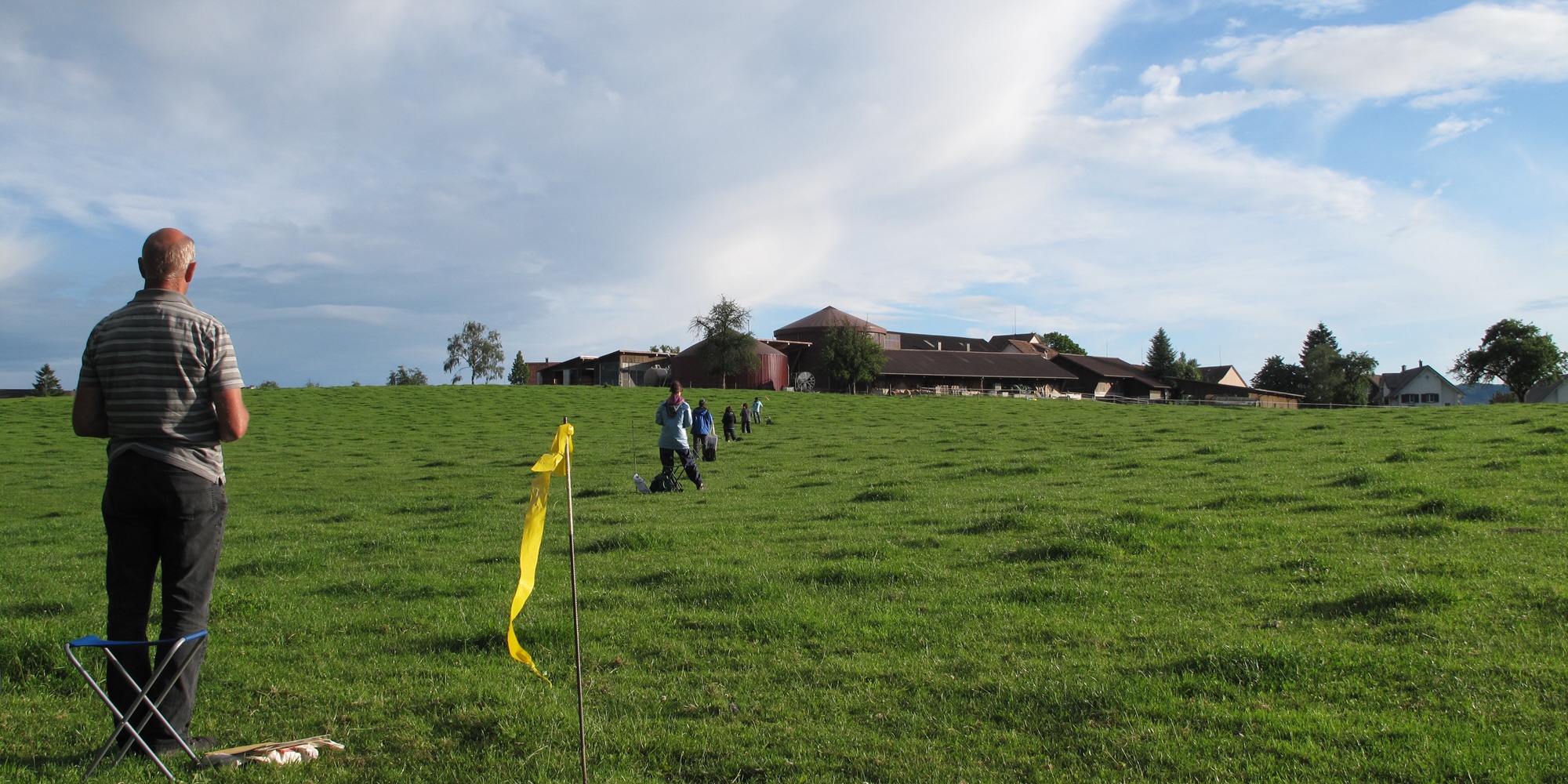Can Odour Impacts Be Reliably Determined by Assessors?
Photo: Margret Keck,
Agroscope
Livestock husbandry poses challenges in determining odour impacts due to the heterogeneity and spatial extent of its odour sources. Agroscope and Empa have refined a method using trained assessors and validated it with tracer gases.
Assessing the odour impacts of farms with livestock husbandry and biogas plants and of neighbouring farms poses a challenge due to the spatial extent, heterogeneity and variety of the odour sources. Methods for determining odour impacts are sometimes criticised for their inadequate reliability and the subjectivity of their sensory analyses. The aim of this study was to validate an optimised method for investigating odour plumes using trained assessors.
Good agreement among the assessors
Clear definitions and warm-up and comparison rounds served to train and calibrate the assessors in terms of their odour perception. When all assessors were placed at the same location there was good agreement for progression over time as well as for odour intensity ratings. Whereas the heretofore common approach only recorded the frequency of recognisable odour, the optimised method allowed assessors to record both frequency and six odour-intensity levels, including weak odour and mixed odour.
Tracer and odour decay with distance to the source
Two different tracer gases were dosed in the odour-relevant areas of the livestock housing and biogas plant on each of two farms. On both farms, a marked decay in the plume with increasing distance to the source was observed both for the odour parameters and the tracer gases. Assessor odour perception correlated well with the tracer gas concentration, which served as an objective measure of dispersion.
Tracers used to differentiate interactions of multiple sources
The livestock and biogas areas were spatially nested on one farm and separated on the other farm. In the combined source configuration, both tracer gases showed a perfect match: the entire combined source was mapped with just one tracer gas. In the spatially separated configuration, however, each position was individually exposed, depending on proximity to the individual odour and tracer sources. In combination with the respective wind direction, spatially extended odour sources have a great bearing on odour impact. For more complex situations with multiple odour sources, such a combined source- and tracer-related approach can be used to trace the individual contribution to the impact and to design appropriate mitigation strategies.
Conclusions
- Odour decay with increasing distance, determined by trained assessors, correlates well with the tracer gas concentration, which serves as an objective measure of dispersion.
- Using two different tracer gases, it is possible to track the dispersion of two different odour sources based on their spatial arrangement via the concentration ratio of the two tracers.
- By combining the two parameters ‘odour frequency’ and ‘odour intensity’, ‘weak odour’ and ‘mixed odour’ can also be taken into account.
- The refined method supports an objective assessment of odour impacts and is also suitable for developing mitigation strategies.
Bibliographical reference
Odor impact assessment in the plume – A validation using tracer gases in two spatial farm configurations.



